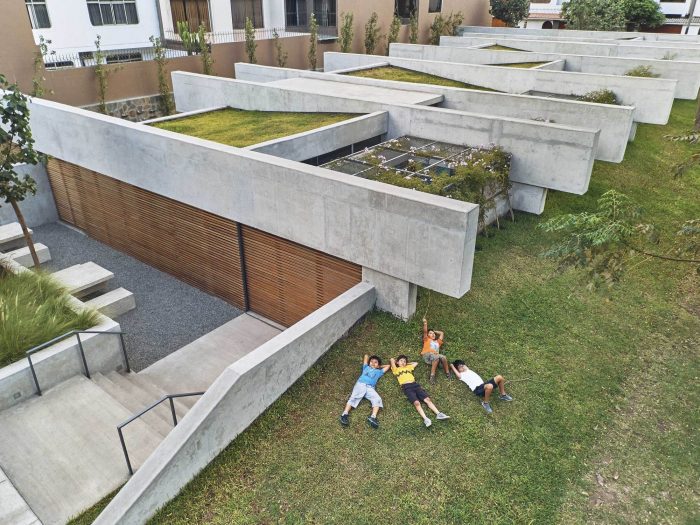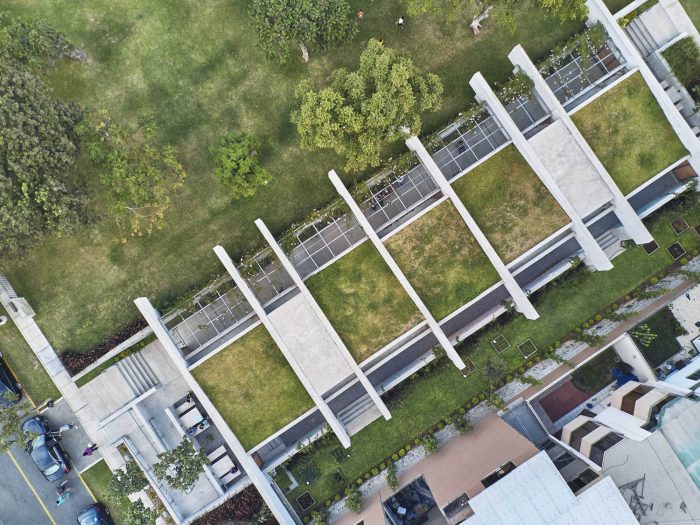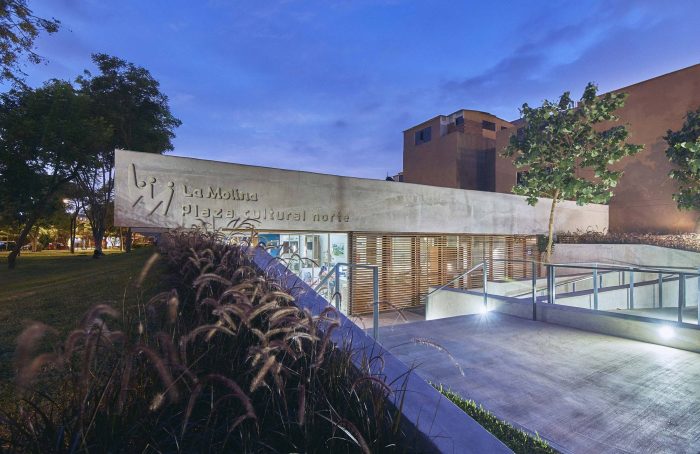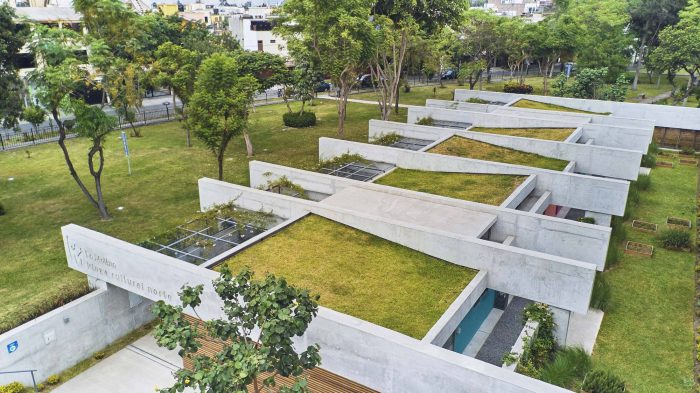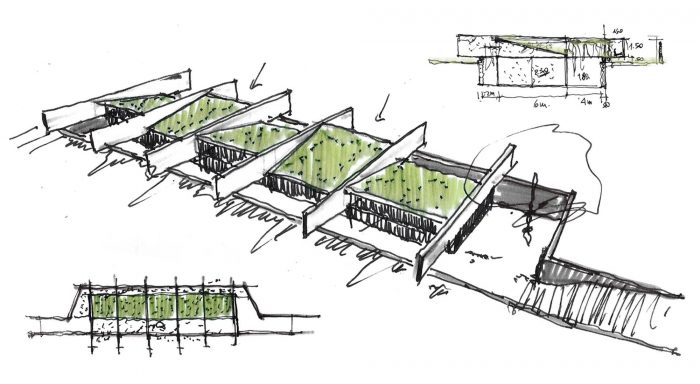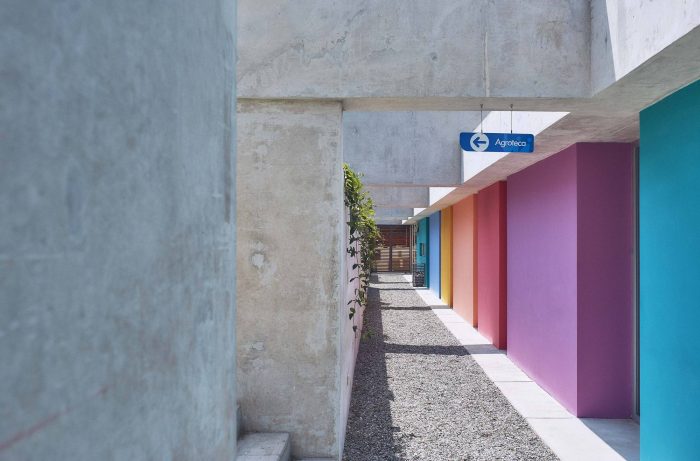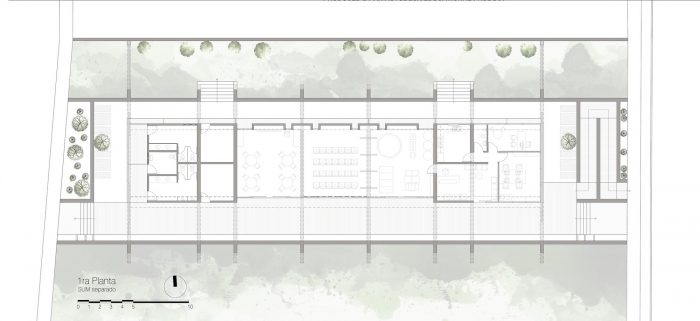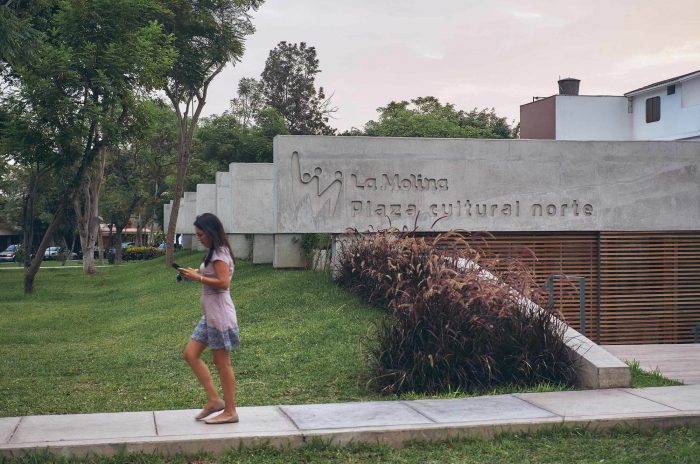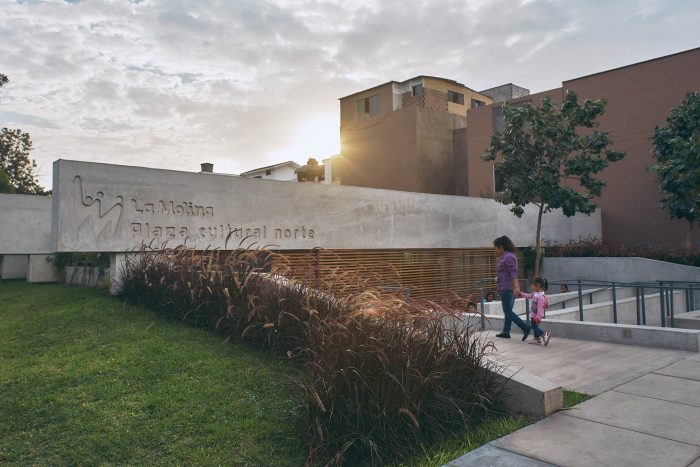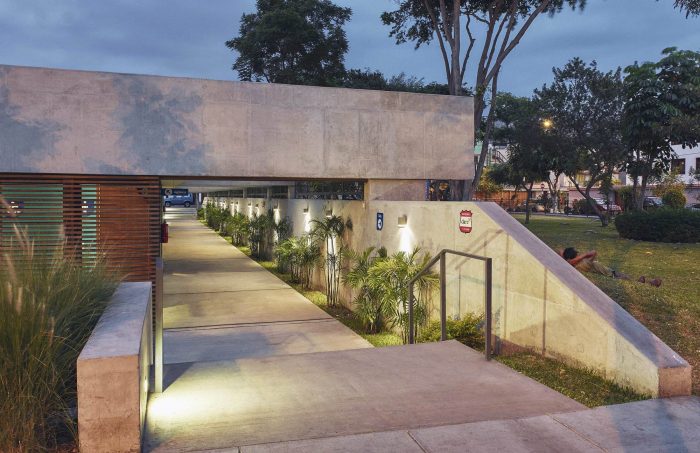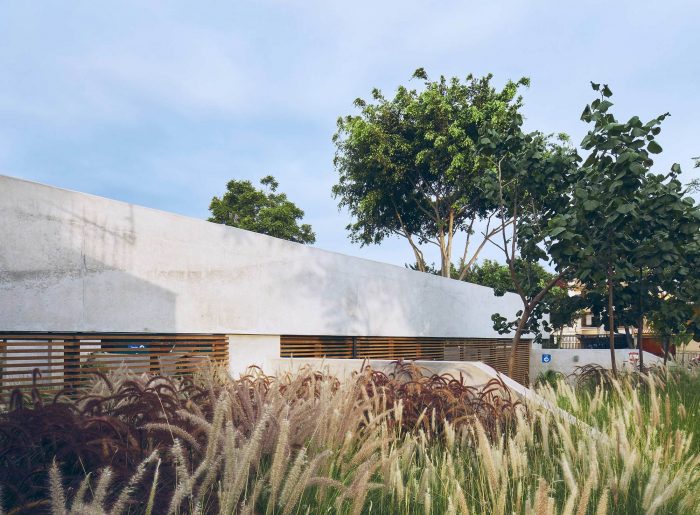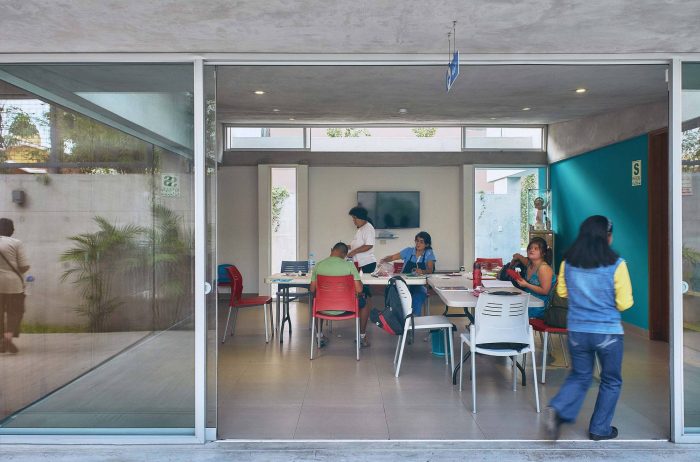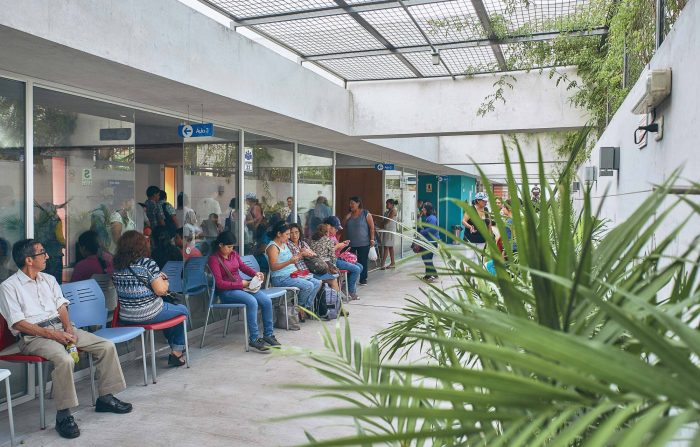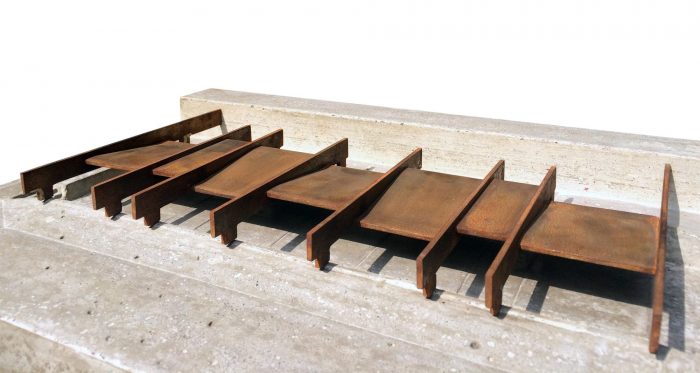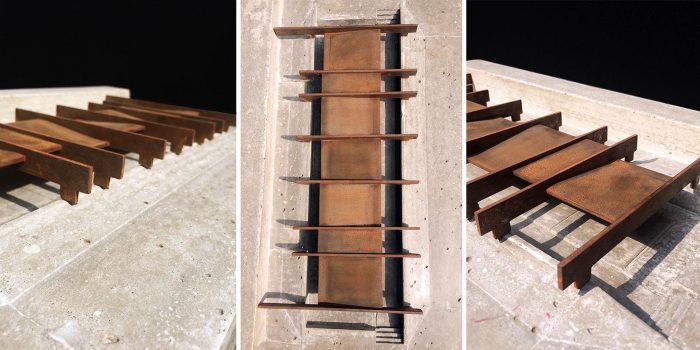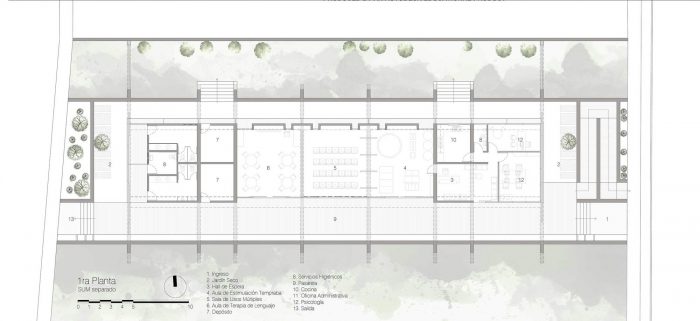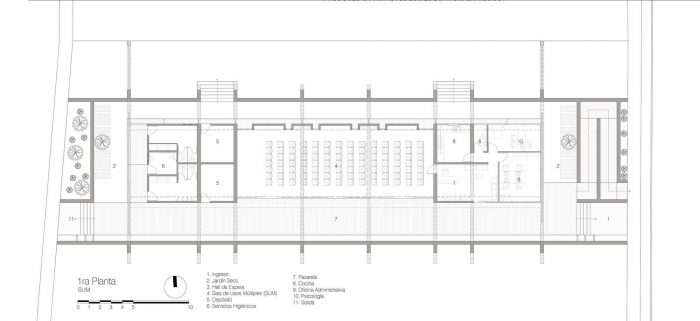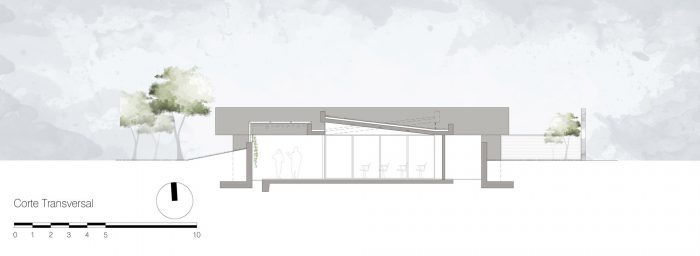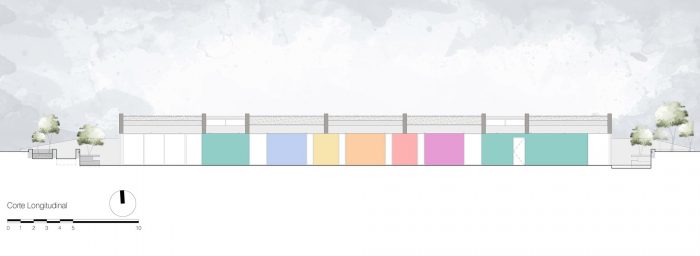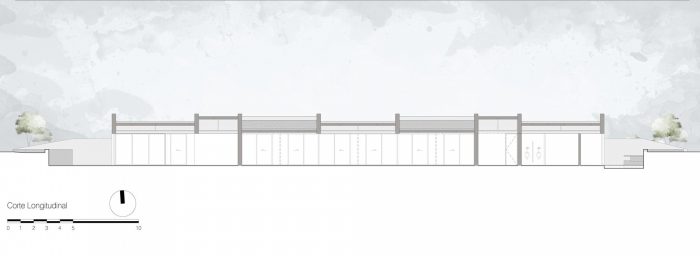背景介绍
市政府试图通过在这个地区和其他地区的文化推广来扭转在这个地区扎根的忽视和危险。作为回应,策略是通过激活一个有公园使用者、邻居、市政府和环境参与的创造性过程,来保护与公共公园相邻的几个废弃地段。该项目探索了一个无声的、隐藏的建筑,以建立一个社会景观,为日常生活增加一个适当的、永恒的和审美的感觉。通过这种方式,它在一个与自然融合的环境中寻求一个相遇、反思、快乐和奇迹的地方。该设计将感觉具体化,创造了梦想、愿望,并以当地的手工制作来尊重建筑工艺,以适应新的、当代的经验。它创造并包含了一个从令人眼花缭乱的世界中暂停的空间,其原材料是由质量和光线定义的。
Background
The municipality sought to reverse the neglect and danger that had taken root in the neighborhood through cultural promotion in this and other parts of the district. In response, the strategy was to preserve a few abandoned lots adjoining public parks by activating a creative process that involved park users, neighbors, the municipality and the environment. The project explores a silent, hidden architecture in order to build a social landscape that adds a proper, timeless and aesthetic sensibility to everyday life. In this manner, it sought a place of encounters, reflection, joy and wonder in a setting that blends with nature. The design materializes sensations, creates dreams, wishes and honors the craft of construction with local handwork adapted to new, contemporary experiences. It creates and contains a pause from a dizzying world within a space whose raw materials are defined by mass and light.

项目地点
该项目被嵌入在Palmar公园附近的一块土地上,周围是一个具有温馨规模的住宅区,正式和非正式建筑的混合,显示出真实的自我形象。
Location
The project was embedded in a lot adjoining the Palmar park, surrounded by a residential area with a welcoming scale, a mix of formal and informal construction that reveals an authentic self-image.
设计理念
创作过程有一个根深蒂固的天职,就是在不同文化的本质中解开永恒的品质。这是我们记忆的灵感来源,它通过光线、材料和空间的使用方式传达其神秘感。该项目试图捕捉原始、本质和工匠精神,并将其带入当代的构造层面。
Concept
The creative process has a deeply rooted vocation to unsettle the timeless qualities in the nature of diverse culture. This is the source of inspiration for our memory, which conveys its mystique through the way light, material and space is used. The project sought to capture the primitive, essential and artisanal and take it to a contemporary tectonic dimension.
主体部分位于地块的东北侧,那里的地面切口界定了空间。构造它的支撑元素以微妙的高贵接受了一系列暴露的水泥梁,以回应功能的模式。封闭的元素包括在梁之间放置了交替倾斜的混凝土板,以及一个可以看到邻近建筑的绿色屋顶。其结果是一个体现了功能、形式和施工经济性的体量。
The main volume rests on the north east side of the lot, where an incision in the ground defines the space. The support elements that structure it receive with subtle nobility a series of exposed cement beams that respond to a pattern of functions. Element of closure include slabs of concrete with alternating inclinations are placed between the beams, as well as a green roof with generous views of neighboring buildings. The result is a volume that demonstrated economy of function, form and construction.
当从前面的通道观察该建筑时,这些空间邀请人们进入其内部。淹没在混凝土梁的格子里后,在穿过一条有许多感觉和过滤光线的路径后,暂停被自动激活。这个空间的概念是作为车间、行政办公室和服务的过渡和扩展。等待区、登陆区和游戏区在主体量的两端开发。内部立面向天井开放,而体量的后部有一个更封闭的立面,一个适合多种用途的天井花园和一个城市社区花园。
When observing the building from the front access, the spaces invites entry to its interior. After submerging in the latticework of concrete beams, upon crossing a path of many sensations and filtered light, the pause is automatically activated. The space was conceptualized as a transition and expansion of the workshops, administrative offices and services. The waiting areas, landing and games are developed at both ends of the main volume. The interior façade opens toward a patio, while the rear of the volume has a more closed façade, a patio garden suitable for several uses and an urban community garden.
颜色
体积后部所使用的鲜艳的颜色,试图反映出所创造的地方的生活,对眼睛来说是动态的,与静态的、封闭的立面形成对比。透明度在内部立面中占主导地位,颜色不断变化,由光线、家具和用户的运动决定。这些都被一个优雅的、中性的建筑框架所统一,清晰地定义了深度和数字。
Color
The vivid colors used in the rear of the volume sought to reflect the life of the place created, dynamic to the eyes to contrast with the static, closed façade. Transparency dominates the interior façade, where colors constantly change, defined by light, furniture and the users’ movement. These are unified by an elegant, neutral architectural framework that clearly defines the depth and figure.
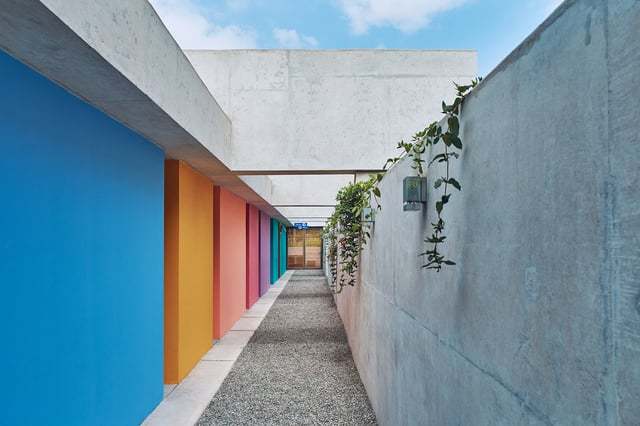
材料
为了回应身份、文化和它们在永恒品质中的表达,意味着要找到一种材料,将这些想法伴随、包裹和包含在一个能维持和克服时间考验的构造形式中。在不忘记背景和建筑作为一门学科的基本原理的情况下,该项目提出了一个具有强烈的、构造性的形象,在植被中静静地溶解,并在其存在中找到其意义和诗意。
Materiality
In order to respond to the identity, culture and their expression in timeless qualities meant finding a materiality that accompanies, envelops and contains these ideas in a constructed form that sustains and overcomes the test of time. Without forgetting the context and the fundamentals of architecture as a discipline, the project proposes an image with a strong, tectonic presence that dissolves silently amidst the vegetation and finds its meaning and poetry in its being.
Architects: Oscar Gonzalez Moix
Area : 450 m²
Year : 2016
Photographs :Ramiro del Carpio
Manufacturers : Casa Rosselló, Corporación Miyasato, Decor Center
Lima Architecture Team : Beatriz Rodriguez, Angela Leva, Rodolfo Rey, Daniela Chang, Jorge Sandoval, Betzabé Gutiérrez
Spain Architecture Team : Alejandro Esposito
City : La Molina
Country : Peru


